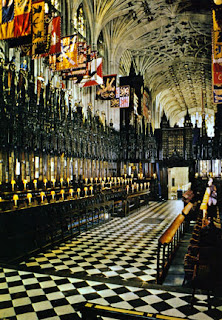Robert Falcon Scott
56 Oakley Street
LONDON SW10
Erected by: London County Council - 1935
Lived Here: 1904 - 1908
 |
| Helen Ross - Me |
 |
| Robert Falcon Scott's Blue Plaque |
 |
| Robert Falcon Scott |
Scott made two expeditions to the north pole the first "The Discovery Expedition" 1901 - 1904 and the ill fated "Terra Nova Expedition" 1910 - 1913.
The march south began on 1 November 1911, a caravan of mixed transport groups (motors, dogs, horses), with loaded sledges, travelling at different rates, all designed to support a final group of four men who would make a dash for the Pole. Scott had earlier outlined his plans for the southern journey to the entire shore party, without being specific about precise roles – no one knew who would form the final polar team. During the journey, Scott sent a series of conflicting orders back to base concerning the future use of the expedition's dogs, leaving it unclear whether they were to be saved for future scientific journeys or were to assist the polar party home. Scott's subordinates back at base were unsure of Scott's intentions, and consequently failed to use the dogs in a concerted attempt to relieve the returning polar party when the need arose.
The southbound party steadily reduced in size as successive support teams turned back. By 4 January 1912, the last two four-man groups had reached 87° 34′ S.[65] Scott announced his decision: five men (Scott, Edward Wilson, Henry Bowers, Lawrence Oates and Edgar Evans) would go forward, the other three (Teddy Evans, William Lashly and Tom Crean) would return. The chosen group marched on, reaching the Pole on 17 January 1912, only to find that Amundsen had preceded them by five weeks. Scott's anguish is indicated in his diary: "The worst has happened"; "All the day dreams must go"; "Great God! This is an awful place".
The deflated party began the 800-mile (1,300 km) return journey on 19 January. "I'm afraid the return journey is going to be dreadfully tiring and monotonous", wrote Scott on the next day. However, the party made good progress despite poor weather, and had completed the Polar Plateau stage of their journey, approximately 300 miles (500 km), by 7 February. In the following days, as the party made the 100-mile (160 km) descent of the Beardmore Glacier, the physical condition of Edgar Evans, which Scott had noted with concern as early as 23 January, declined sharply. A fall on 4 February had left Evans "dull and incapable", and on 17 February, after a further fall, he died near the glacier foot.
With 400 miles (670 km) still to travel across the Ross Ice Shelf, the party's prospects steadily worsened as, with deteriorating weather, frostbite, snow blindness, hunger and exhaustion, they struggled northward. On 16 March, Oates, whose condition was aggravated by an old war-wound to the extent that he was barely able to walk, voluntarily left the tent and walked to his death. Scott wrote that Oates' last words were "I am just going outside and may be some time".
After walking a further 20 miles, the three remaining men made their final camp on 19 March, 11 miles (18 km) short of One Ton Depot, but 24 miles (38 km) beyond the original intended location of the depot. The next day a fierce blizzard prevented their making any progress. During the next nine days, as their supplies ran out, with frozen fingers, little light, and storms still raging outside the tent, Scott wrote his final words, although he gave up his diary after 23 March, save for a final entry on 29 March, with its concluding words: "Last entry. For God's sake look after our people". He left letters to Wilson's mother, Bowers' mother, a string of notables including his former commander Sir George Egerton, his own mother and his wife. He also wrote his "Message To The Public", primarily a defence of the expedition's organisation and conduct in which the party's failure is attributed to weather and other misfortunes, but ending on an inspirational note, with these words:
| We took risks, we knew we took them; things have come out against us, and therefore we have no cause for complaint, but bow to the will of Providence, determined still to do our best to the last ... Had we lived, I should have had a tale to tell of the hardihood, endurance, and courage of my companions which would have stirred the heart of every Englishman. These rough notes and our dead bodies must tell the tale, but surely, surely, a great rich country like ours will see that those who are dependent on us are properly provided for. |
 |
| Robert Falcon Scott's Burial Place |
Scott is presumed to have died on 29 March 1912, possibly a day later. The positions of the bodies in the tent when it was discovered eight months later suggested that Scott was the last of the three to die.

































